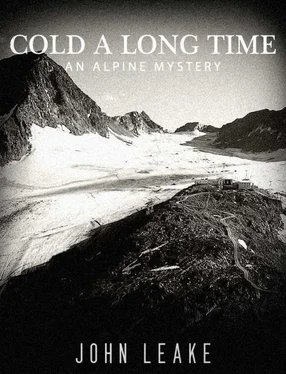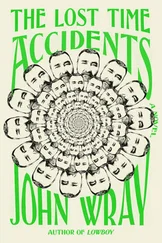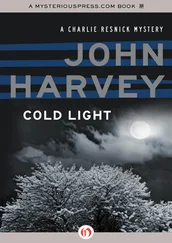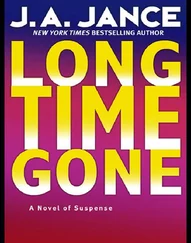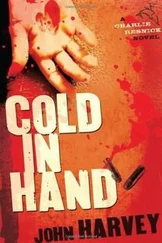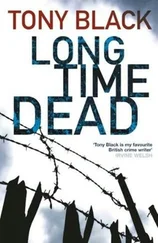“They had to know,” he said. “But the attitude was sort of, ‘If you’re doing something wrong, we don’t want to know.’”
In Duncan’s case, it’s likely that only a few Innsbruck officials knew exactly what was going on. Others knew enough to recognize that someone with influence wanted the problem to go away, which meant that there was no sense in diligently investigating it. All were complicit in perpetrating a massive fraud against the MacPhersons.
The prosecutor’s decision to invoke the statute of limitations was the rankest kind of expediency, but even if criminal prosecution of Stubai Glacier personnel for negligent homicide was legitimately time-barred, it didn’t justify concealing the cause and manner of Duncan’s death from his parents and from the Canadian Embassy.
Lynda’s greatest wish now is that her son’s death be recognized by Austrian authorities as a matter of solemnity, not as a nuisance to be swept under the rug. At the very least, he should be issued a proper death certificate noting the correct date of death (not the date his corpse was found). His life ended on August 9, 1989, and he deserves the dignity of having this officially recorded. Lynda would also like for the official report of his death to be corrected to show that no autopsy was performed, and that the truth of this be conveyed by official correspondence to Canadian Foreign Affairs.
To me, it’s a plain matter of fact that the MacPhersons have been treated abominably by Innsbruck officials who were more interested in protecting local interests than enforcing the law. Because the cause and manner of their son’s death was concealed from them, they have been obliged to spend vast amounts of time and money to discover the truth. They have been systematically defrauded, and they deserve to be financially compensated for the terrible damage they have suffered.
Chapter 41: A Bigger Problem
If anyone could have shed light on the case after Duncan’s body was found, it was Dr. Rabl. He had the corpse in his dissection room for a week, and had he simply provided the MacPhersons with an honest forensic medical report, the entire complexion of their lives since 2003 would have been different. Had he given them clarity, they would have found the peace of mind that comes with understanding. Instead they have suffered yet another eight years of confusion and frustration.
On November 8, 2010, Lynda sent Rabl an email in which she asked him if he could identify the cable visible in the photo he’d taken of Duncan’s body. She attached a copy of the image with red arrows indicating the object, and she pointed out that it was not visible in his subsequent photo, taken from the same angle five minutes later.
Rabl did not respond to her email, so three weeks later, she sent her query to him again. He then replied with the following email:
Hello Lynda,
I’m sorry that I did not get your email earlier—in the last few weeks we had some problems with the email-accounts of our institute. I hope that you are well. Concerning the picture I am not able to identify the object which you mentioned. I only could make a guess. Maybe it is a part of Duncan’s clothing (rest of an elastic tie) or a cord that belongs to the binding of the snowboard?? I couldn’t find it on any other picture too. I’m sorry that I can ( sic ) help you!
Cheers, greetings to Bob, Walter
Rabl couldn’t find it in any other picture because he or someone assisting him had removed it. The cable is not part of Duncan’s clothing or equipment, and it is tensioned onto his bare skin and fractured bone, which indicates that it was brought into contact with his leg after his leg was destroyed. Why? A likely explanation is that someone tried to use the cable as an instrument for freeing the limb from the grooming tiller (see Appendix 1 for a full presentation of this hypothesis).
I would like to emphasize that theorizing about the cable would be completely unnecessary if Dr. Rabl had properly identified it. It is not enough for him to imply that he simply hadn’t noticed the cable wrapped around Duncan’s destroyed leg. The first task of the forensic doctor is to examine a body for the presence of foreign objects or marks left by foreign objects. It is Dr. Rabl’s job to notice such things.
In recent years, Rabl has served as the forensic doctor in three cases of foreign citizens who suffered unnatural deaths in Austria, none of which were officially solved in Austria. The first was the German boy Raven Vollrath, whose decomposed body was found in a stream bed near the Tyrolean ski resort of Zoeblen in June of 2006. Because Dr. Rabl found no clear signs of foul play on the boy’s body, the Innsbruck public prosecutor Rudolf Koll closed the case. However, after Raven’s parents discovered that their son had, in fact, been murdered, his body was exhumed in Germany, where a forensic doctor found marks on his ribs and sternum that were consistent with knife stabs.
Moreover, although Raven’s undershirt was found with his body and is visible in police photos, it was subsequently burned by someone at the Innsbruck Institute of Forensic Medicine. Given that Raven was stabbed repeatedly in the chest, his undershirt may have been marked with blood stains and knife blade holes. Why was his shirt destroyed?
The second case was that of a beautiful twenty-eight-year-old German waitress named Susi Greiner, who disappeared in Tyrol in August of 2006. Two weeks later, her body was found on a mountainside (the Karwendel), completely naked and barefoot, 1,000 vertical meters above the lot where her car was parked. Her clothing, hiking boots, and backpack containing her laptop and cell phone were later found at different locations in the valley. All data—all records of communication before her death—had been deleted from her laptop and phone. Moreover, she was last seen alive with an unidentified man in the passenger seat of her car.
In spite of these suspicious circumstances, Dr. Rabl found no signs of foul play on her body and concluded that she had died of hypothermia. According to an ORF report, “the only injury on her body was a laceration on her head that may have resulted from falling and sliding several meters.” From Dr. Rabl’s findings, the police theorized that Susi must have hiked naked and barefoot (in an area popular with tourists) to the high elevation and died of exposure.
Susi’s mother asked Rabl about the condition of her daughter’s feet, and he replied that they bore no conspicuous marks, only a bit of grass between her toes. How, Susi’s mother wanted to know, had her daughter hiked barefoot for several hours over rocky terrain without cutting and abrading the soles of her feet? Mrs. Greiner might have also asked Rabl how he had determined that the laceration on Susi’s head was the result of an accidental fall, and not from an assailant’s blow with a blunt instrument.
The third case was that of a Slovakian caretaker named Denisa Soltisova, who died under mysterious circumstances in the Upper Austrian town of Voecklabruck in January of 2008. Ten days after she was last seen alive, her completely naked body was found in a nearby river. Five hours later, with no autopsy, the public prosecutor ruled her death a suicide, closed the case, and released her body for burial in Slovakia.
Unsatisfied with the Austrian investigation (or lack thereof) the Slovakian authorities commissioned the forensic doctors Josef Krajcovic and Lubomir Straka to examine Denisa’s body. They found bruises on her arms and inner thighs consistent with sexual assault. Her blood also contained significant amounts of medications used to treat diabetes and gout, even though she suffered from neither illness. At the time of her death, she was the caretaker of an elderly urologist, and it was a reasonable assumption that he kept stashes of these medications in his home office. Though the doctor’s old age and infirmity ruled him out as a suspect for sexual assault, it was not unreasonable to suspect that a regular visitor to his home had gained access to his medications and put them in Denisa’s drink without her knowledge.
Читать дальше
